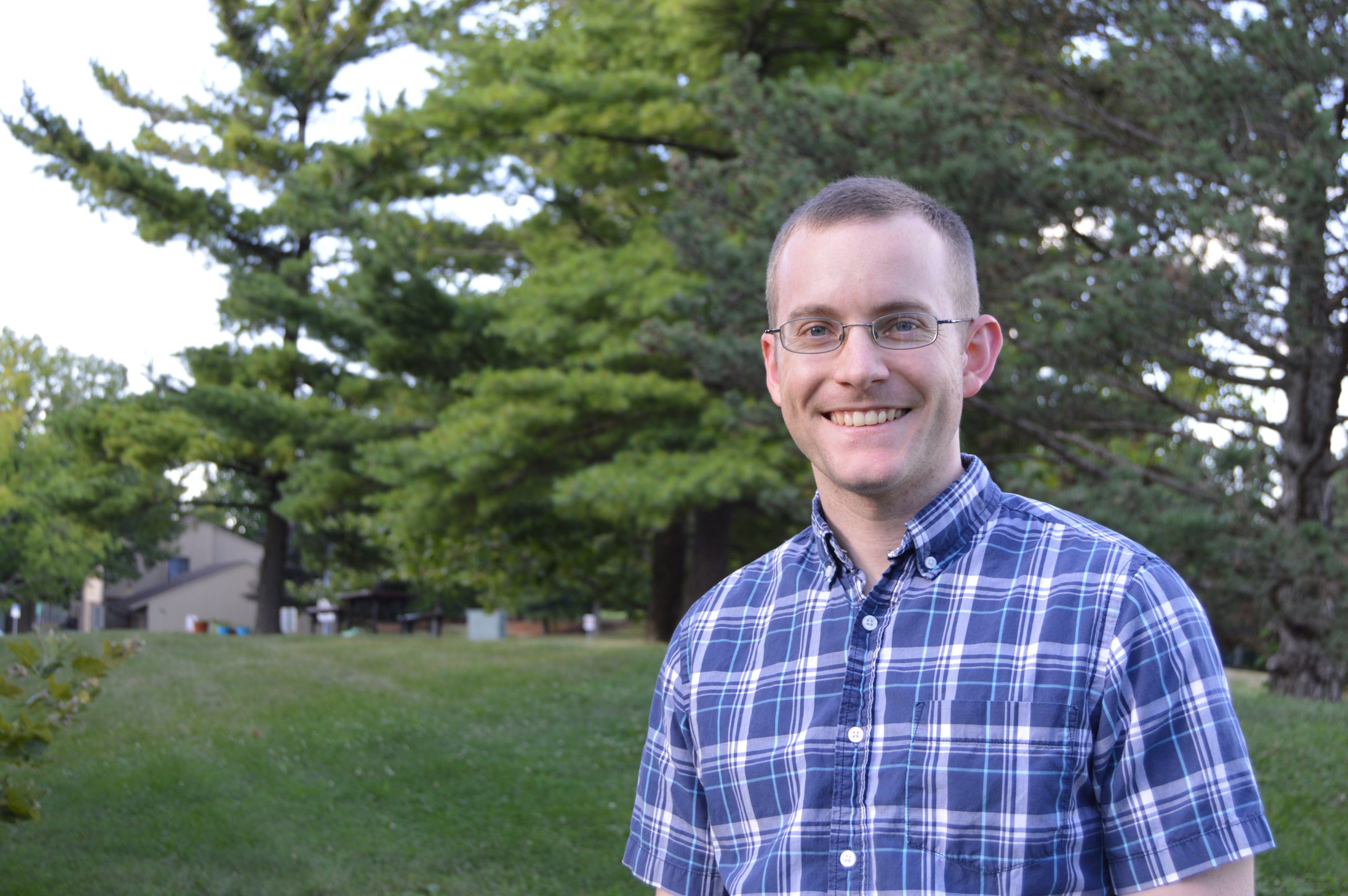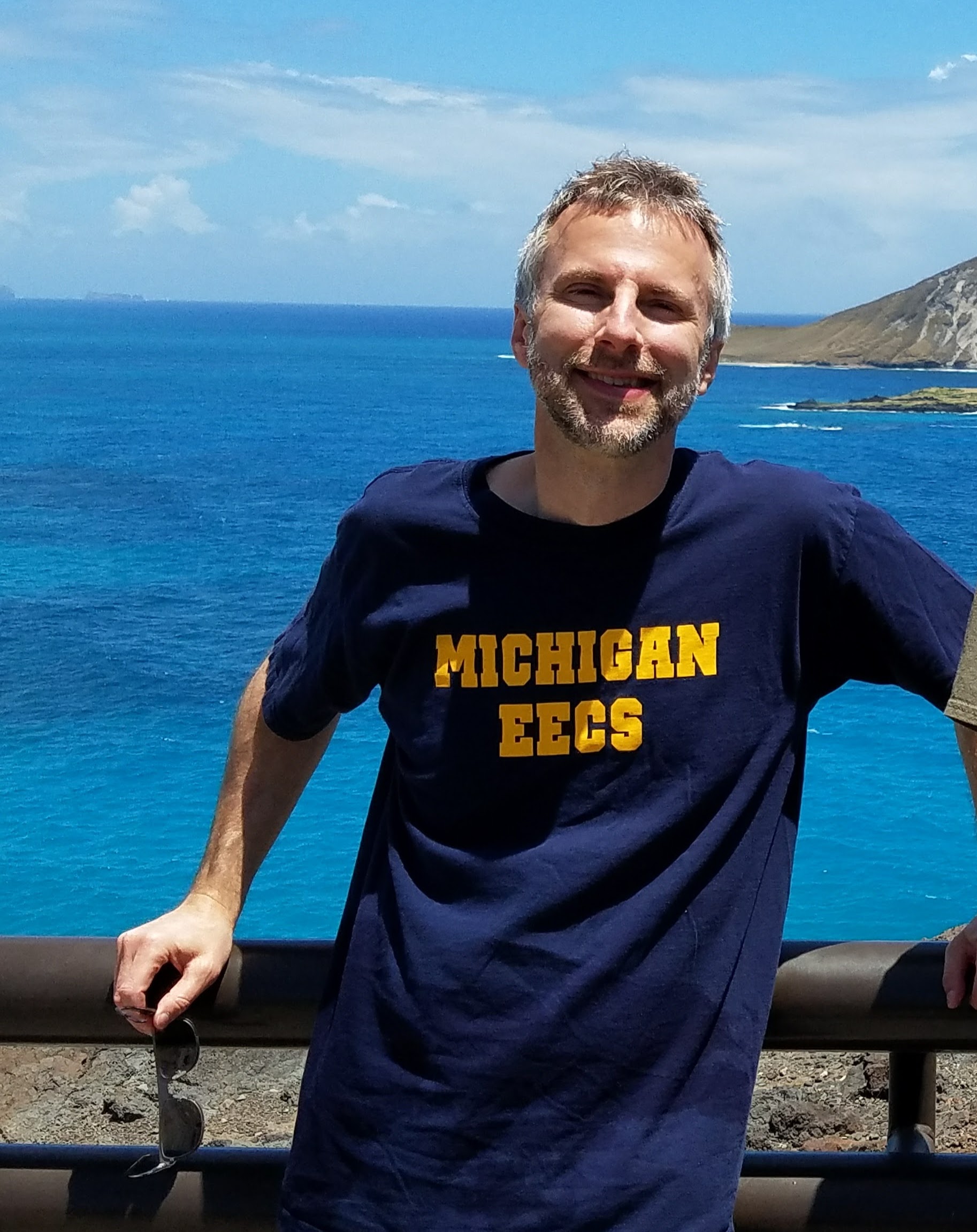By Jessica McKay

For our August 2020 MRM Highlights Pick interview, we talk to Steven Whitaker, Jon-Fredrik Nielsen and Jeff Fessler from the University of Michigan. Their paper is entitled “Myelin water fraction estimation using small-tip fast recovery MRI”. Steven started MRI research as an undergraduate and is currently a PhD student in electrical and computer engineering. Jon-Fredrik is an associate research scientist who designs steady-state pulse sequences and is passionate about “vendor agnostic” pulse programming, which is a framework for rapid prototyping of sequences across vendors. Jeff came to the University of Michigan 30 years ago as a postdoc who worked on many imaging modalities. His career evolved from there and, inspired by Doug Noll, he got involved in MRI research about 21 years ago.
MRMH: To start off with, I’m curious to know if you used Jon-Fredrik’s vendor-agnostic pulse sequence framework for this work?

Jon-Fredrik: We did! The framework is based on MATLAB so that the user can design the sequence, preview it in MATLAB, and then export it to the scanner. This approach is closely related to–and compatible with–the “Pulseq” environment, and together these frameworks allow the same sequence specification to be played out on both GE and Siemens scanners. We hope to implement sequence drivers for other vendor platforms in the future.
Jeff: I have never written a pulse sequence myself, but I have had many students use the tools that Jon-Fredrik developed. Collaborating with these guys makes it so much easier to try out different sequences.
MRMH: There is a ton packed into this paper. Can you break it down for us?
Steven: The goal was to develop a method using small-tip fast recovery (STFR) to estimate the myelin water fraction (MWF). First, we designed the STFR sequence parameters by minimizing the Cramér-Rao lower bound (CRLB) of our MWF estimates. After acquiring the data, we used a supervised learning algorithm called PERK (parameter estimation via regression with kernels) to estimate the voxel-by-voxel MWF. Another important aspect is that we used the three-compartment model with chemical exchange to simulate the training data.
Jeff: At a high level, the standard method for MWF imaging is a multi-echo spin-echo (MESE) technique that is just too slow to be used routinely in the clinic. By using a steady-state sequence, we hoped to greatly reduce the scan time, as we showed in the paper.
Steven: It has also been shown that myelin water experiences an additional off-resonance. We included this in our model, whereas it is typically ignored in other techniques.
Jon-Fredrik: The myelin frequency shift is a source of contrast that we employ by adjusting the flip angle and phase of the second RF pulse. For historical reasons we call this a tip-up pulse, but really that’s a misnomer in this context because we are using it to alter the contrast in a way that is informative of the MWF.
Jeff: I’m learning here too! You’re right, it’s only a tip-up if we happen to be aligned. I’ll have to read this interview and learn more about the method [laughs]!
MRMH: Can you explain more about your optimization?
Steven: We optimize the set of STFR scans in order to minimize the CRLB of MWF estimates. The tip-up in this STFR sequence introduces T2 weighting. We cycle through different flip angles and tip-up phases (as determined by the scan optimization) so that, for each location, we get a mixture of T2-weighting, T1-weighting, and sensitivity to the frequency offset. You need some mixture of flip angles and phase of the second pulse to make sure that you are sampling each voxel multiple times along this curve.
MRMH: Is the underlying objective to optimize the SNR?

Jeff: It’s not that simple. Let me draw an analogy with diffusion imaging. If you want to maximize SNR, you should just set b = 0. To estimate diffusion parameters, you have to collect some scans with larger b-values, even though those have lower SNR. Analogously, we need a diversity of contrasts. There might be higher SNR in some of the images than others, but overall, we want to achieve the best possible precision of the MWF estimation.
MRMH: That makes a lot of sense to me! Has STFR been used for this purpose before?
Jon-Fredrik: No, it has not. This is a very different application of STFR which I really like. I think of STFR as a Swiss army knife, in the sense that it’s a general tool for altering the contrast. Steven came up with a really nice way to exploit that for this application.
MRMH: Have you learned anything in the course of this work that you wish you had known when you started?
Jeff: I wish we had known the importance of exchange when we started. The reviewers of a paper we submitted with another student pointed out the importance of exchange, something that we hadn’t considered, so Steven rolled up his sleeves and started working on it. In this case, we really benefited from the expertise of the reviewers.
Jon-Fredrik: It’s one thing to know about it, but it’s another to know if it will really impact your estimation. It’s a bit of a philosophical issue – maybe a method that is semi-quantitative is good enough.
MRMH: You provided a lot of code and data for readers. What was your incentive to do that, and how would you like other researchers to use your work going forward?
Steven: I look at it from the perspective of a new MR researcher. When I came here, one of the first things I did was to reproduce figures from STFR papers as part of my learning process. I coded everything from scratch because that is how I learn, but it was nice to have code from previous PhD students when mine wasn’t producing the same results. I like putting the code out there so that if someone else wants to do similar research, they can use our code as a starting point. I see it as a learning tool for other people.
Jeff: I’ve been benefiting from open source tools for my entire career, and I feel that this is a way of giving something back. I always use LaTeX to write my papers, and I use Unix/Linux for most of my work; this work was all done in Julia. I’m paying back by contributing to science. Plus, the taxpayers have paid for this work so I think it should be open to the community at large so that everyone can benefit from the work they help support.
MRMH: What are the obstacles for translating this work to the clinic?
Steven: The main hurdle is getting whole-brain MWF maps within a reasonable time. We need to accelerate with undersampling and develop a reliable reconstruction algorithm.
MRMH: It seems that one advantage is that your approach is quite generalizable.
Steven: With Jon-Fredrik’s work on vendor-agnostic sequence programming, we are getting to the point where it shouldn’t matter what system you have. At this point, it should be enough to make sure the optimization includes the tissue characteristics and frequency offset for the field strength you are scanning at.
Jeff: Having said that, it would still be fairly simple to redo that optimization for a different field strength.




